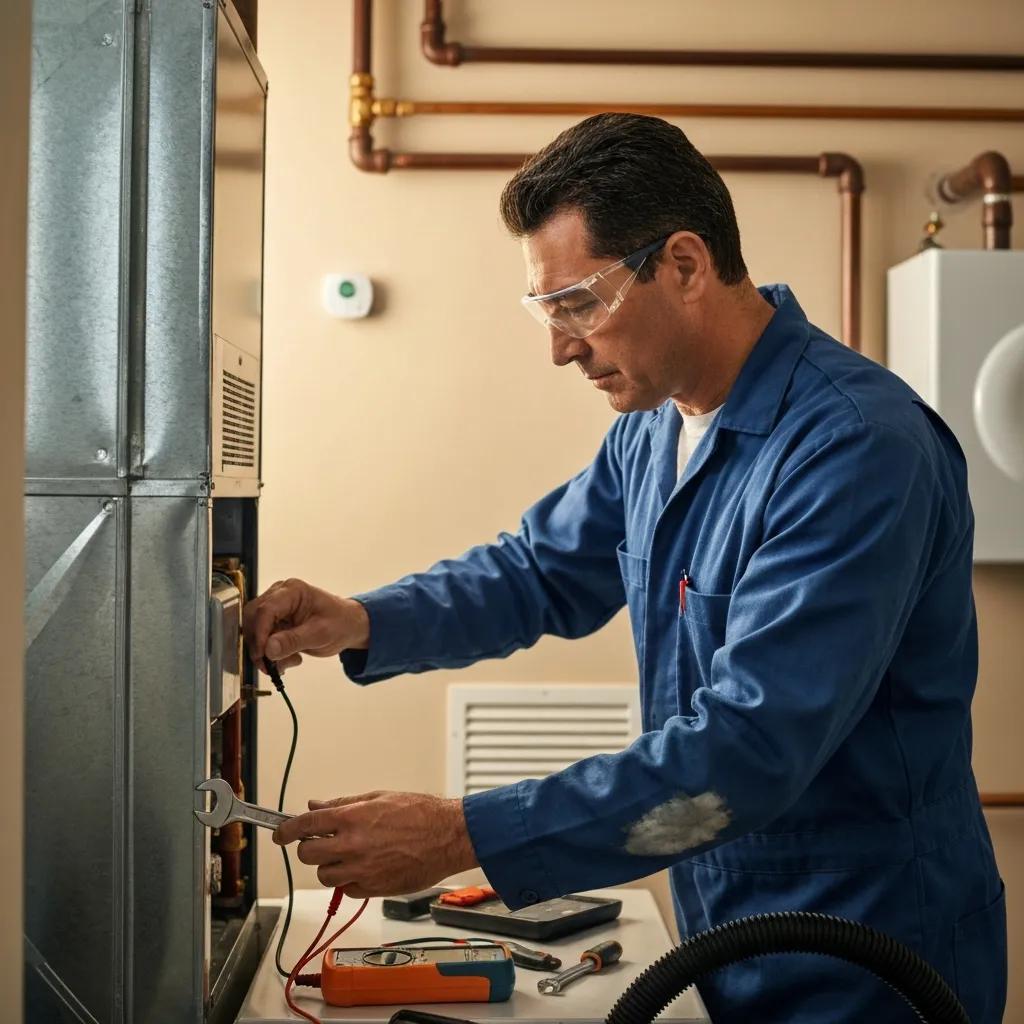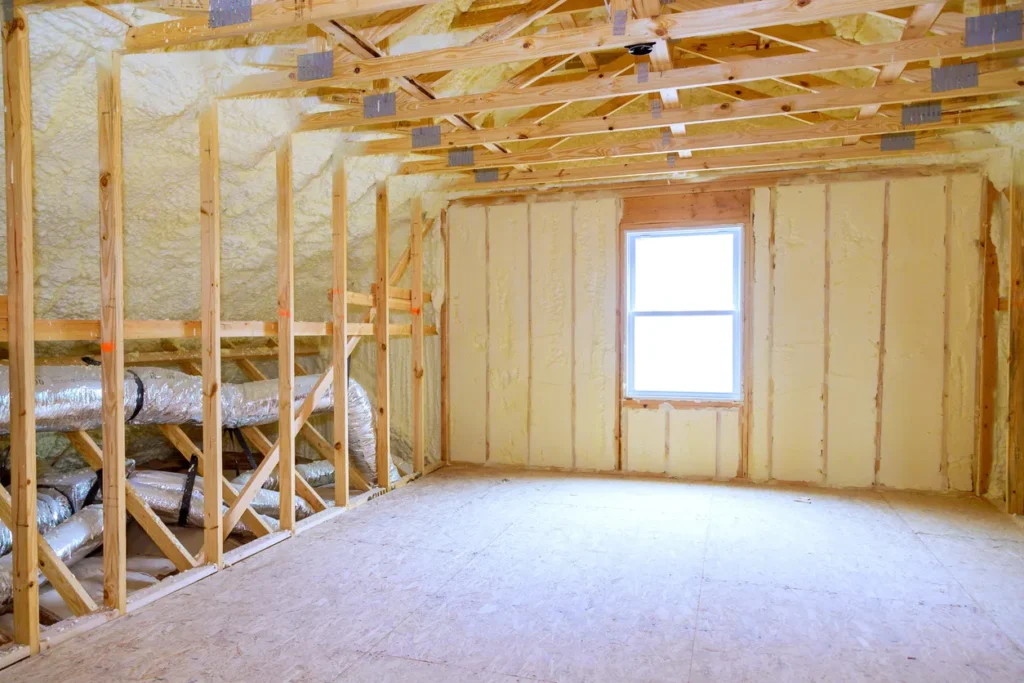
Practical Winter Heating Tips: Keep Your Home Warm, Safe, and Energy‑Smart
Winter brings a familiar homeowner challenge: staying comfortable without letting heating costs—or safety risks—get out of hand. This guide lays out clear, HVAC-focused steps you can use at home or with a trusted technician to keep temperatures steady, cut fuel use, and ease wear on your system. You’ll find straightforward advice on seasonal furnace and heat‑pump tune-ups, the insulation projects that give the biggest payback, thermostat strategies that save energy, and ductwork care that improves delivery. We also cover simple daily habits that add warmth at little or no cost and the essential safety checks—carbon monoxide detection and humidity control—that protect your household. Each section mixes plain explanations, quick how‑tos, and short checklists so you can act confidently yourself or know when to call a pro. Tips are especially relevant for homes in Greensboro, Jamestown, and High Point; when a professional visit makes sense, we call that out clearly.
How Can Annual Furnace and Heat Pump Maintenance Improve Winter Heating Efficiency?
Scheduling an annual tune‑up for furnaces and heat pumps is the most reliable way to keep systems running efficiently and safely through winter. A proper service visit clears airflow blockages, checks and adjusts combustion or refrigerant systems, and calibrates controls so your equipment moves heat into the house with less waste. That means steadier room temperatures, fewer short cycles, and longer equipment life—translating into lower operating costs and better comfort. Routine inspections also catch early wear so you avoid emergency repairs at the coldest time of year. Below is a compact checklist of the core tasks you should expect during a seasonal service.
- Air Filter Replacement: Put in the manufacturer‑recommended filter or MERV rating to restore airflow and reduce blower strain.
- Combustion and Venting Safety Checks: Inspect burners, ignition components, and flue/vent paths to confirm safe, efficient operation on gas furnaces.
- Electrical and Control Tests: Check thermostat calibration, safety switches, and electrical connections to prevent surprises.
- Heat Exchanger and Coil Inspection: Clean and inspect the furnace heat exchanger and outdoor heat‑pump coils to preserve efficient heat transfer.
Those items reduce energy waste and reveal parts that may need repair or replacement—leading into the specific furnace tasks you can do before winter arrives.
What Are the Key Steps in a Furnace Maintenance Checklist for Winter?

A thorough furnace checklist mixes simple homeowner actions with the technician’s work. Start with easy tasks you can do yourself—replace filters, check vents for blockages, and confirm the thermostat schedule fits the season—then rely on a pro for combustion analysis, heat‑exchanger inspection, lubrication, and safety control testing. A full tune‑up often improves fuel consumption by a measurable amount and restores the designed efficiency of the unit. If you see a yellow burner flame, smell unusual odors, or notice frequent on/off cycling, stop and schedule professional service rather than trying deeper repairs on your own.
How Does Heat Pump Winter Care Enhance Home Comfort and Energy Savings?
Heat pumps need different winter attention than gas furnaces. Focus areas are refrigerant charge, reversing‑valve operation, and reliable defrost cycles. Clean outdoor coils and keep the outdoor unit clear of debris so heat exchange remains efficient. Correct refrigerant levels and a healthy defrost routine keep the unit from relying on energy‑hungry auxiliary electric heat. Proper controls help the system run in compressor mode rather than switching to resistive backup whenever possible, which saves energy and produces steadier indoor temperatures. If your heat pump feels weak or you notice the backup heat running often, it’s time for a diagnostic from a qualified technician.
Different systems need different checks; the quick comparison below helps prioritize service needs.
| System Type | Typical Winter Maintenance | Primary Benefit |
|---|---|---|
| Gas Furnace | Filter change, burner cleaning, heat exchanger inspection, vent check | Restores combustion efficiency and safety |
| Heat Pump | Outdoor coil cleaning, refrigerant check, defrost control test, reversing valve check | Maximizes low‑temperature heat transfer and minimizes auxiliary heat use |
| Hybrid Systems | Dual‑check of controls and thermostat integration | Ensures seamless switching and optimal energy use |
This comparison shows why targeted maintenance matters—and when it makes sense to escalate to professional servicing for reliable winter performance.
Routine service is the best insurance against winter breakdowns. If you want professional maintenance, Repair Solutions Inc. offers heating maintenance, furnace tune‑ups, and heat‑pump winterization performed by local technicians who know Greensboro‑area homes. Their work focuses on restoring efficiency, verifying safety, and documenting recommended repairs so you can prioritize the investments that matter. Call a certified technician if your system shows performance drops or safety symptoms after basic checks.
What Are the Best Home Insulation Tips to Prevent Heat Loss in Winter?
Insulation slows conductive heat loss through the building envelope by adding thermal resistance (R‑value) where heat flow is highest. Put simply: more and better insulation keeps warm indoor air from leaking out and reduces how long your heating system must run. Start with the highest‑impact spots—attic, exterior walls, and rim joists—and pair insulation upgrades with air sealing to block convective drafts that bypass thermal layers. Better insulation lowers energy bills, evens out room temperatures, and makes lower thermostat setpoints feel comfortable for longer stretches between cycles.
Here are practical actions ranked by typical return on investment.
- Attic Insulation: Add or top up attic insulation to your climate’s recommended R‑value to cut roof‑related heat loss.
- Air Sealing Gaps: Seal penetrations, gaps, and rim joists to stop warm air from escaping and cold air from entering.
- Wall and Floor Upgrades: Consider dense‑pack or blown‑in insulation for cavity walls and insulate floors above unconditioned spaces.
The next section explains how to find drafts and seal windows and doors effectively.
How Can Draft Proofing Windows and Doors Reduce Heat Loss?
Draft proofing targets small air leaks that create cold spots and force your heating system to work harder. Start simple: use a lit incense stick or a tissue near seals at night (when inside/outside temperature differences are largest) to spot moving air. Common fixes include adhesive foam, V‑strip weatherstripping, and door sweeps for different gap sizes; use caulk for fixed‑frame gaps. Short‑term measures like window film help until replacement windows are feasible—replace windows when U‑values are poor or frames show rot or condensation. Effective draft proofing brings immediate comfort and reduces heating runtime.
Which Areas Should You Insulate to Maximize Winter Warmth?

Prioritize places with the biggest heat loss and where insulation is often missing or degraded: attics, exterior walls, rim joists, and ducts in unconditioned spaces. Attic insulation usually offers the best return because warm air rises and the roof is a major heat path; adding depth to existing insulation is often the most cost‑effective step. Seal rim joists and basements/crawl spaces to stop cold air infiltration, and insulate duct runs that run through attics or crawl spaces to prevent distribution losses. Match material, installation complexity, and local climate when deciding DIY versus professional work.
| Location | Recommended Approach | Typical Recommended Value |
|---|---|---|
| Attic | Add loose‑fill or batt insulation, air seal penetrations | R-49 to R-60 |
| Walls | Dense‑pack or blown‑in cellulose for cavities | R-13 to R-21 |
| Rim Joist/Crawl Space | Spray foam or rigid insulation with sealing | R-19 to R-21 |
Insulation plus air sealing together multiply heating efficiency gains and reduce the load on your heating system.
Research shows sealed, insulated attics and airtight ductwork are important for peak home‑heating performance, especially in newer construction.
Why Is Ductwork Sealing Important for Winter Heating Efficiency?
Ductwork moves conditioned air through your home—when it leaks or lacks insulation, a lot of that heat never reaches living spaces. Leaks in attics, crawl spaces, or between floors can waste a significant share of delivered heat, forcing the furnace or heat pump to run longer and creating uneven temperatures. The core problem is lost air and pressure imbalance: conditioned air escaping to unconditioned areas lowers delivered room temperatures and increases runtime. Finding and sealing leaks and insulating ducts that run through cold spaces improves airflow, raises delivered temperature, and cuts energy waste. Watch for the common signs below.
- Uneven room temperatures: Rooms far from the blower stay cold while others are warm.
- Visible disconnected or sagging ducts: Seams that separate or ducts that have fallen loose.
- High energy bills with no other cause: More runtime without better comfort.
What Energy Saving Habits Can Help Keep Your Home Warm Without Increasing Heating Costs?
Small behavior changes and low‑cost tweaks work with system upgrades to get more comfort for less energy. Dressing in layers, managing curtains for passive solar gain, and heating only occupied rooms let you lower whole‑house setpoints without feeling cold. These habits reduce perceived temperature demands in lived zones and avoid wasting heat on empty spaces. Combining simple daily routines with smart thermostat schedules delivers immediate savings and prolongs the benefits of tune‑ups and insulation. Below are easy, practical habits that cost little and pay off every day.
- Dress in layers and use warm textiles: Use clothing and throws to feel warmer so you can set the thermostat lower.
- Manage window coverings: Open curtains on sunny days to capture free heat and close them at night to cut radiative loss.
- Use targeted heating: Close doors to unused rooms and use safe supplemental heaters in occupied spaces when needed.
The next section shows how ceiling fans and sunlight can be used intentionally to add warmth.
How Can Using Ceiling Fans and Natural Sunlight Improve Winter Warmth?
Reverse ceiling fans to a low clockwise speed to push warm air that rises back down along walls into the living space. During sunny hours, open south‑facing curtains to capture passive solar heat and slightly raise interior temperatures; close coverings at night to reduce radiative loss through windows. These low‑effort strategies help reduce heating demand.
What Are Effective Zone Heating Strategies for Energy Savings?
Zone heating directs warmth where people spend time instead of heating the whole house all the time. Simple moves—close doors to unused rooms, use programmable thermostats for different zones, or bring a safe portable heater into the room you’re using—often supply comfort with lower overall energy. Fully integrated zoning with motorized dampers delivers more control but needs professional installation and balancing to avoid pressure issues. For most homes, a hybrid approach—housewide scheduling plus targeted supplemental heat—strikes the best balance of comfort and cost.
Conclusion
Keeping your home warm and energy‑efficient this winter is realistic with the right mix of routine maintenance, targeted upgrades, and everyday habits. Prioritize furnace and heat‑pump tune‑ups, attic and duct sealing, and smarter thermostat control to reduce bills and improve comfort. These steps also support safety and better indoor air quality. For tailored advice or professional service, contact Repair Solutions Inc.—we’ll help you find the right combination of tune‑ups, ductwork repairs, insulation, or thermostat upgrades for your home.
